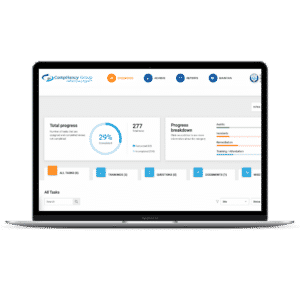What Is HIPAA 5010?

Under the HIPAA electronic data interchange (EDI) rule, electronic data transactions between covered entities must follow data transmission specifications. These specifications cover what information can be communicated, and in what form and content it can be communicated in. The HIPAA EDI rule requires that covered entities use the X12N EDI data transmission protocol. Under this protocol, covered entities must use specific data code sets. The current code set standard format is referred to ASC X12 Version 5010, or HIPAA 5010. More detailed information on HIPAA 5010 is provided below.
What is the HIPAA 5010 Requirement?
HIPAA required HHS to establish national standards for electronic transactions to improve the efficiency and effectiveness of the nation’s healthcare system.
Would you pass a HIPAA audit? Take this quiz to find out!
These standards apply to all HIPAA covered entities:
◈ Health plans.
◈ Healthcare clearinghouses.
◈ Healthcare providers who conduct electronic transactions, not just those who accept Medicare or Medicaid.
◈ Any provider who accepts payment from any health plan or other insurance company must comply with HIPAA if they conduct the adopted transactions electronically.
HIPAA 5010 is one of these national standards. Whenever one of the following transactions is entered into, HIPAA 5010 applies:
◈ Health Care Eligibility Benefit Inquiry and Response
◈ Health Care Claim Status Request and Response
◈ Health Care Services Request for Review and Response
◈ Health Care Services Notification and Acknowledgement
◈ Payroll Deduction and Other Group Premium Payment for Insurance Products
How Does HIPAA 5010 Actually Work?
Title II of HIPAA requires all providers and billers covered by HIPAA to submit claims electronically using the ASC X12 Version 5010, or HIPAA 5010. HIPAA 5010 transactions are best thought of visually as a series of cars. Each car looks the same on the outside. The colors are the same, the tires are the same, the amount of doors are the same. This universe of cars that all appear the same on the outside can be thought of as transactions in the HIPAA 5010 universe. In the HIPAA 5010 universe, all code sets must be identical. The same number must be used to denote the same procedure, for every transaction there is.
Within each car, there are different features inside. One car may have an antilock braking system, a cupholder and reclining bucket seats, while another may only have antilock brakes. Just as each component of the car has a part number, each claim within a 5010 transaction has a code set number.
What are the Common Code Set Numbers?
All code set numbers are preceded by the prefix “X12,” to indicate that the HIPAA 5010 format is
being used. The two most common code set numbers are 837 and 835. The code number of X12 837 is the code set number used by billers to request reimbursement from a healthcare plan. When a HIPAA covered entity requests information about the patient, the provider, the patient’s health insurance plan, or about procedures and diagnoses, the request is sent using the code set number X12 837. The code set number X12 835 code set number, in contrast, contains payment (remittance) information. This number is sent by the healthcare plan to a provider, to provide information about the healthcare services being paid for. 835 files contain such information as what charges were paid/reduced/denied, deductible/co-insurance/co-pay amounts, and how the payment was made (cash, credit card, etc.).
HIPAA 5010 also transitioned the healthcare industry from ICD9-ICD-10. ICD10 is a code system for diagnoses and procedures. Specific medical conditions each have their own ICD10 code.




